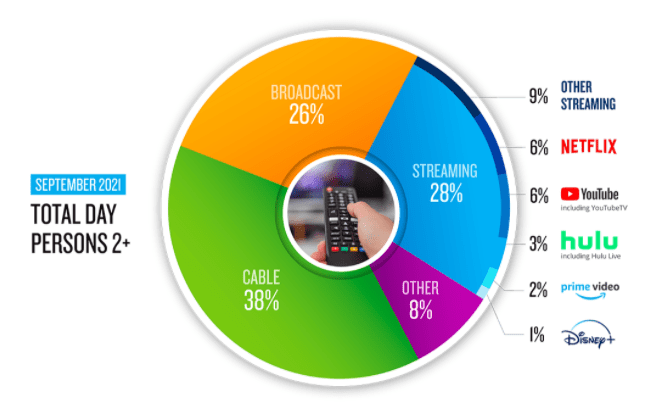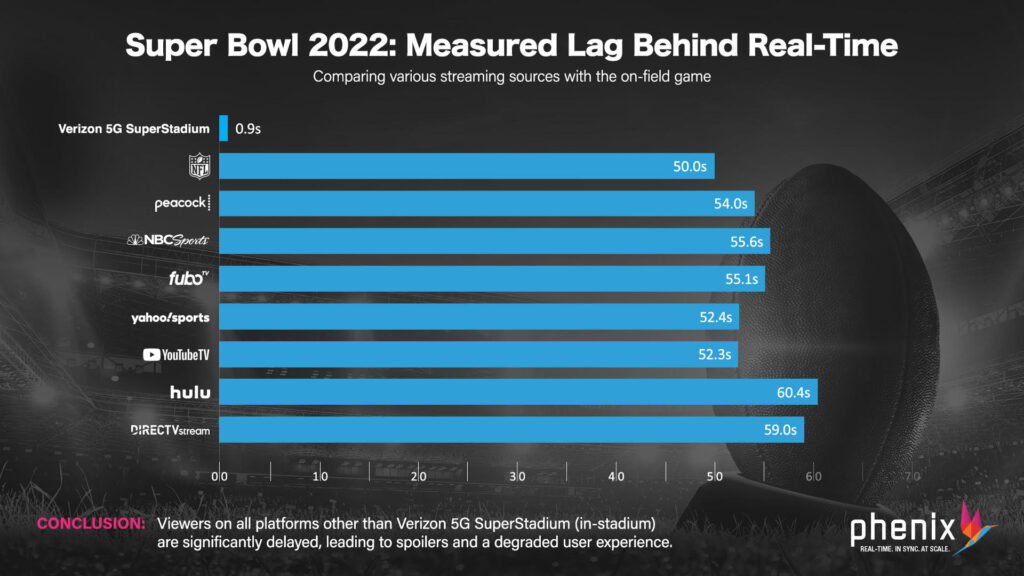Future of TV Briefing: A Q&A with Snap’s original content chief Vanessa Guthrie

By Tim Peterson
Broadcast TV’s bounce-back came at the expense of video gaming, per Nielsen. But it may also explain streaming’s stagnation. For the third month in a row, streaming’s share of TV watch time stuck at 28%.
While streaming watch time overall stayed static, there were some shifts among the services people streamed. Netflix and Disney+ each lost a percentage point, while YouTube, Hulu, Amazon Prime Video and the “other” category of remaining streamers held their marks from the previous month. That suggests that the streaming viewership pie is starting to slice up into smaller pieces as streaming outlets and programming continue to flood the market.
Then again, Netflix and YouTube in particular are pretty dominant among streamers. Nielsen’s numbers make that clear, as does a
The Future of TV Briefing this week features a conversation with Snap’s recently appointed head of original content Vanessa Guthrie about the platform’s original programming strategy as it rolls out a new slate of shows and eyes more international expansion.
- A chat with Snap
- Netflix’s Q3 2021 earnings report
- Broadcast TV bounces back
- An entertainment strike averted, an outcry among Netflix employees, a profile of Discovery’s David Zaslav, a look at YouTube’s creator team and more
A chat with Snap
The key hits:
- International is a major focus for Snap’s original programming strategy heading into 2022.
- Snap has found a sweet spot with original shows featuring “cable TV”-level budgets, with episodes rolled out every 48 hours, weekly or sometimes daily.
- The latest Snap Original slate consists of unscripted series after Snap had to pause production on scripted shows because of the pandemic.
Five years after Snap debuted its first original show on Snapchat, the platform’s original programming strategy has remained fairly steady. While YouTube and Facebook have largely abandoned their forays into scripted series to focus on unscripted fare, Snap’s slate of more than 130 Snap Original series continues to offer a mix of both, for example. However, 2021 does seem to present an inflection point for the company’s original programming business.
This year not only did Snap debut its first non-English-language original show — “Phone Swap India” — but it also appointed a new head of original content, Vanessa Guthrie. In an interview with Digiday to coincide with the announcement of five new Snap Original series, the five-year Snap veteran explained how the company’s original programming in the U.S. has matured and how it is now eyeing more international opportunities.
“The area of growth probably for our team the most has been outside of the U.S. At this point in the U.S. we’re a pretty well-oiled machine five years into it,” Guthrie said.
Snap’s international ambitions appear to be part of the platform’s all-inclusive approach to programming. Case in point: 53% of the Snap Originals shows that aired in 2020 featured hosts or leads who were BIPOC or LGBTQ+, and of the five latest Snap Originals to be announced, four shows are produced by companies that are owned or run by women or BIPOC executives, Guthrie said.
Applying that inclusive approach to Snap’s International programming plans, while the platform aims to produce shows that are primarily tailored to local markets, it is also considering how those programs can appeal to audiences who may not speak a series’ native language. It’s a playbook that Netflix has established with language-barrier-breaking breakout hits like “Squid Game.”
“We’ve just started our international efforts, but that is a topic that we are absolutely thinking about. Take, for example, ‘Phone Swap India.’ I watched it with subtitles; I think it’s one of the best shows we’ve ever made,” Guthrie said.
The interview has been edited for length and clarity.
To what extent do these newest shows signal any new developments in Snap’s unscripted programming plans?
They really confirm some of the areas that we’ve been leaning farther into …read more
Source:: Digiday






